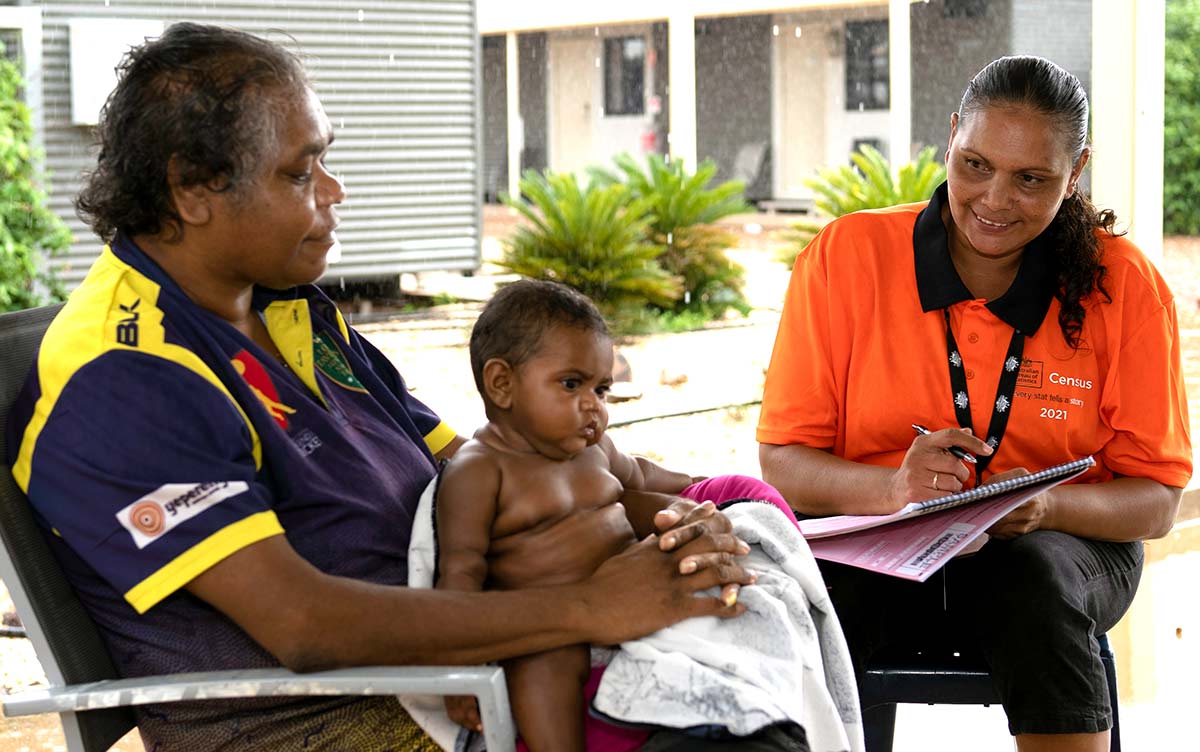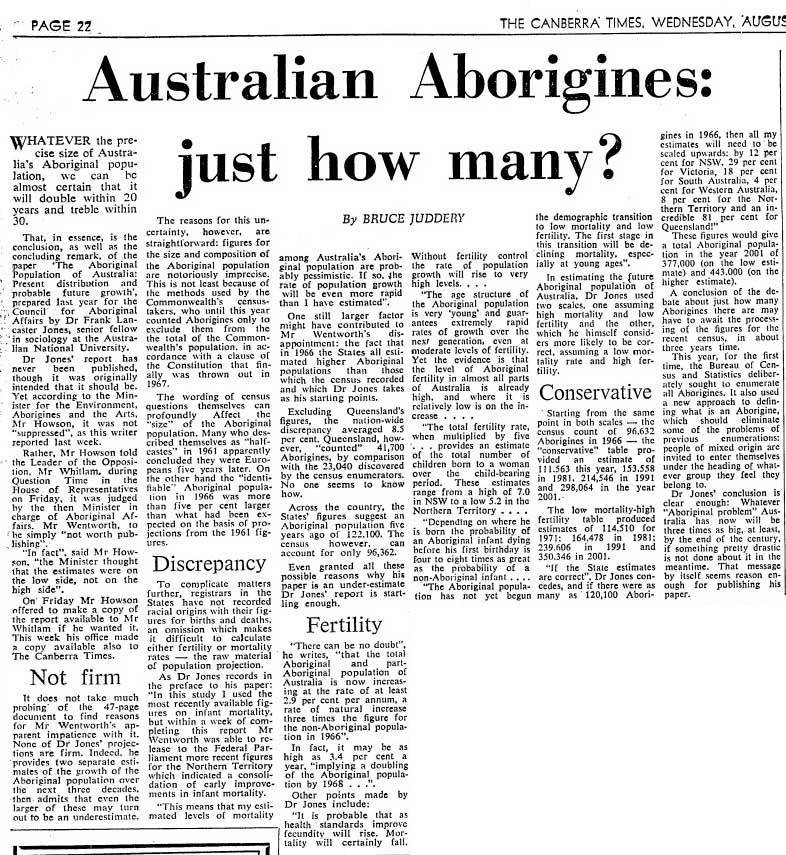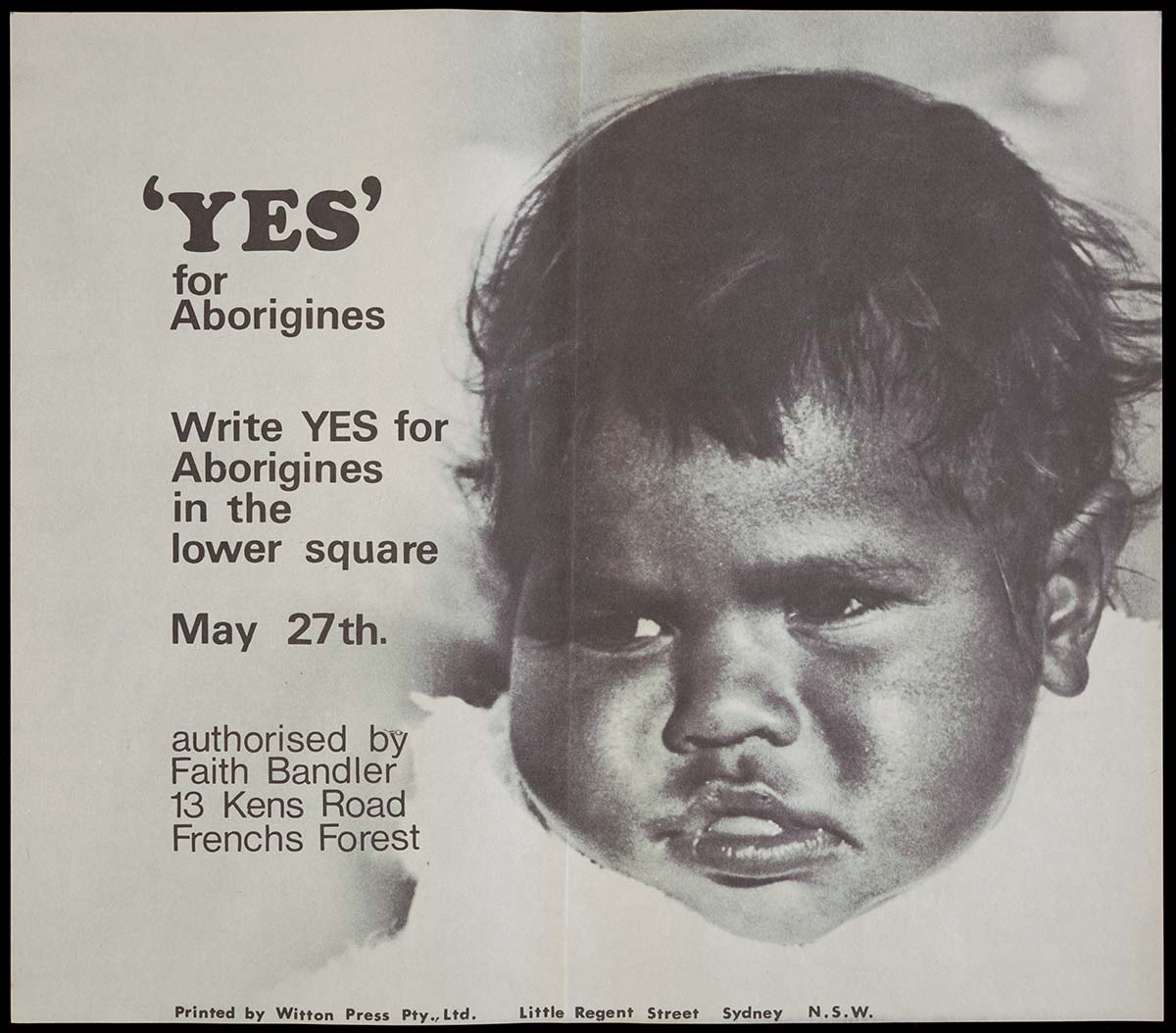Australia’s 1901 Constitution treated First Nations peoples differently from other Australians. From 1901 to 1971 they were excluded from being counted as part of the national population.
In 1967 Australians voted to change the Constitution. The 1971 Census of Population and Housing was the first time Aboriginal and Torres Strait Islander peoples were included in the population count.
This was a symbolic moment in the long struggle for First Nations recognition and rights.
Moses Nelliman, Badulaig and Meriam, Torres Strait, 2021:
Data was collected on Aboriginal and Torres Strait Islander people prior to that [1971] but obviously it was done in a different context, not for their betterment. It was used to gather information about people that were displaced, removed from Country, placed into institutions. Whereas the ’71 Census was the first time that Australia’s First Nations people were recorded as citizens of this great nation.
Every five years the Australian Bureau of Statistics conducts a census of Australia. The census gathers a range of information including the number of people who live in Australia and includes questions on age, gender, ancestry, relationships, location, dwellings, languages spoken at home, employment and religion.
1967 referendum
In 1967 Australians overwhelmingly voted to amend the Constitution. One of these changes was to remove section 127:
In reckoning the numbers of people of the Commonwealth, or of a State or other part of the Commonwealth, aboriginal natives shall not be counted.
Section 127 did not prevent First Nations peoples from being counted in the census. But it did mean they were not counted as part of the national population. In fact, the census identified those people of mainly Aboriginal and/or Torres Strait Islander origin, in order to exclude them from national population calculations.
Artwork in first video frame: Our Story. Our Future artwork created by proud Wiradjuri, Wotjobaluk, Yuin and Gumbaynggirr artist Luke Penrith and Maluiligial people, Badu Island artist Naseli Tamwoy
Australian census before 1971
Soon after the arrival of the First Fleet at Sydney Cove, British colonists tried to work out how many First Nations peoples lived there.
In August 1788 Governor Arthur Phillip sent several boats to count the Gadigal people of the Eora nation, who lived in and around Warrane (Sydney Harbour).
Before 1901 each Australian colony made attempts to calculate the numbers of First Nations peoples. This became complicated as colonial authorities used racially based methods that have now been discredited to define who was and was not ‘Aboriginal’.
After Federation in 1901 the Australian census continued to attempt to distinguish between Indigenous and non-Indigenous people. Many had mixed ancestry. Only individuals considered to be of more than 'half' Aboriginal and/or Torres Strait Islander ancestry were counted as First Nations peoples.
Early censuses, from 1911 on, simply asked each person what race they were. However, from 1933 to 1961 people were asked whether they were ‘European’ or some other race such as ‘Aboriginal, Chinese, Negro, Afghan, &c’. The census assumed that those who nominated ‘mixed caste’ were half-European and asked them to write ‘H.C.’ (‘half-caste’) with the name of their other racial heritage.
By 1966 the term ‘half-caste’ was considered derogatory and people of ‘mixed race’ were asked to nominate fractions – a quarter, half, three-quarters and so on. The 1966 Census was the only one which attempted such categorisation.
Torres Strait Islander peoples were counted differently to Aboriginal peoples from 1947. In that year they were excluded from the ‘aboriginal natives’ definition of the Constitution and instead classified as ‘Polynesians’. This meant they were included in national population calculations.
Another difficulty in calculating the numbers of First Nations peoples was that many lived in remote areas. Before 1967 the census did not or could not accurately count the large First Nations population living in non-urban areas. The census relied on estimates provided by state and territory authorities in charge of First Nations welfare.
1971 Australian census
After the 1967 referendum result Prime Minister Harold Holt set up the Council for Aboriginal Affairs to consider the next steps for including Aboriginal and Torres Strait Islander peoples in the calculation of Australia's population.
A key question was how to define First Nations peoples. Importantly, the council decided people of ‘mixed ancestry’ should have the freedom to choose which was most important to them. The chairman, Dr HC ‘Nugget’ Coombs, summed up:
Perhaps the best definition of Aboriginal is a person who so describes himself.
The council convinced the Bureau of Census and Statistics to adopt this definition. This definition was also extended to Torres Strait Islanders.
Accordingly, in the 1971 Census each person was asked to identify only the race which was most important to them:
What is this person’s racial origin?
(If of mixed origin, indicate the one to which he considers himself to belong.)1 ☐ European origin
2 ☐ Aboriginal origin
3 ☐ Torres Strait Islander origin
4 ☐ Other origin (give one only) ...........................................
About 116,000 Australians identified themselves as being Aboriginal (106,000) or Torres Strait Islander (nearly 10,000). This was 30,000 more people than those who identified as greater than 50 per cent Aboriginal or Torres Strait Islander in the 1966 Census.
This change was partly due to better counting and demographic growth. However, the changed definition allowed many people of First Nations descent to identify as either Aboriginal or Torres Strait Islander. There was a further large rise to 160,000 in the 1976 Census.
Australian census after 1971
In 1981 the word ‘racial’ was dropped from the census question. Since then the question has always been, ‘Is the person of Aboriginal or Torres Strait Islander origin?’
Since 1986 a separate question in the census has enabled people to nominate up to two ‘ancestries’, which may be countries or ethnic groups. ‘Aboriginal’ and ‘Torres Strait Islander’ are among the options.
In the 2016 Census about 650,000 Australians identified as being of Aboriginal and/or Torres Strait Islander origin. However, allowing for people who were missed and many people not answering the question, the Australian Bureau of Statistics estimated in 2016 that almost 800,000 people, or 3.3 per cent of the population, identified as Aboriginal and/or Torres Strait Islander.
The number of First Nations peoples has risen steadily in recent decades. Today many more people identify as being of Aboriginal and/or Torres Strait Islander origin.
Ross Williams, Warumungu, Tennant Creek:
It was 1971 and I thought it was very, very important to be part of the statistics. We are the First Nations people of this country.
If we want to move forward we have to have a say and have our voice in all these statistics and researches.
Note: This page includes some terms that reflect the times in which they were written and are now considered inappropriate. They do not reflect the views of the National Museum of Australia.
In our collection
References
Australian Bureau of Statistics: Beth Wright, ‘One hundred years of working on the census’
Parliament of Australia, Indigenous Constitutional Recognition: The 1967 Referendum and Today
Barrie Dexter, Pandora’s Box: The Council for Aboriginal Affairs, 1967–1976, eds Gary Foley and Edwina Howell, Keeaira Press, Southport, Queensland, 2015.
Kate Ross, Population Issues, Indigenous Australians: 1996, ABS Occasional Paper, 4708.0: Australian Bureau of Statistics, Canberra, 1999.
The Aboriginal Population: Characteristics of the Aboriginal and Torres Strait Islander Population, Census of Population and Housing, 30 June 1971, Bulletin 9: Commonwealth Bureau of Census and Statistics, Canberra, 1973.


